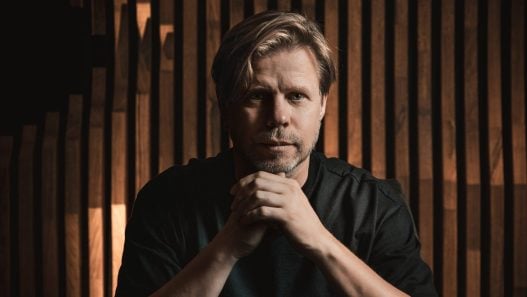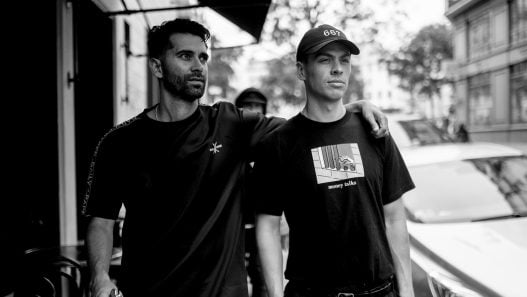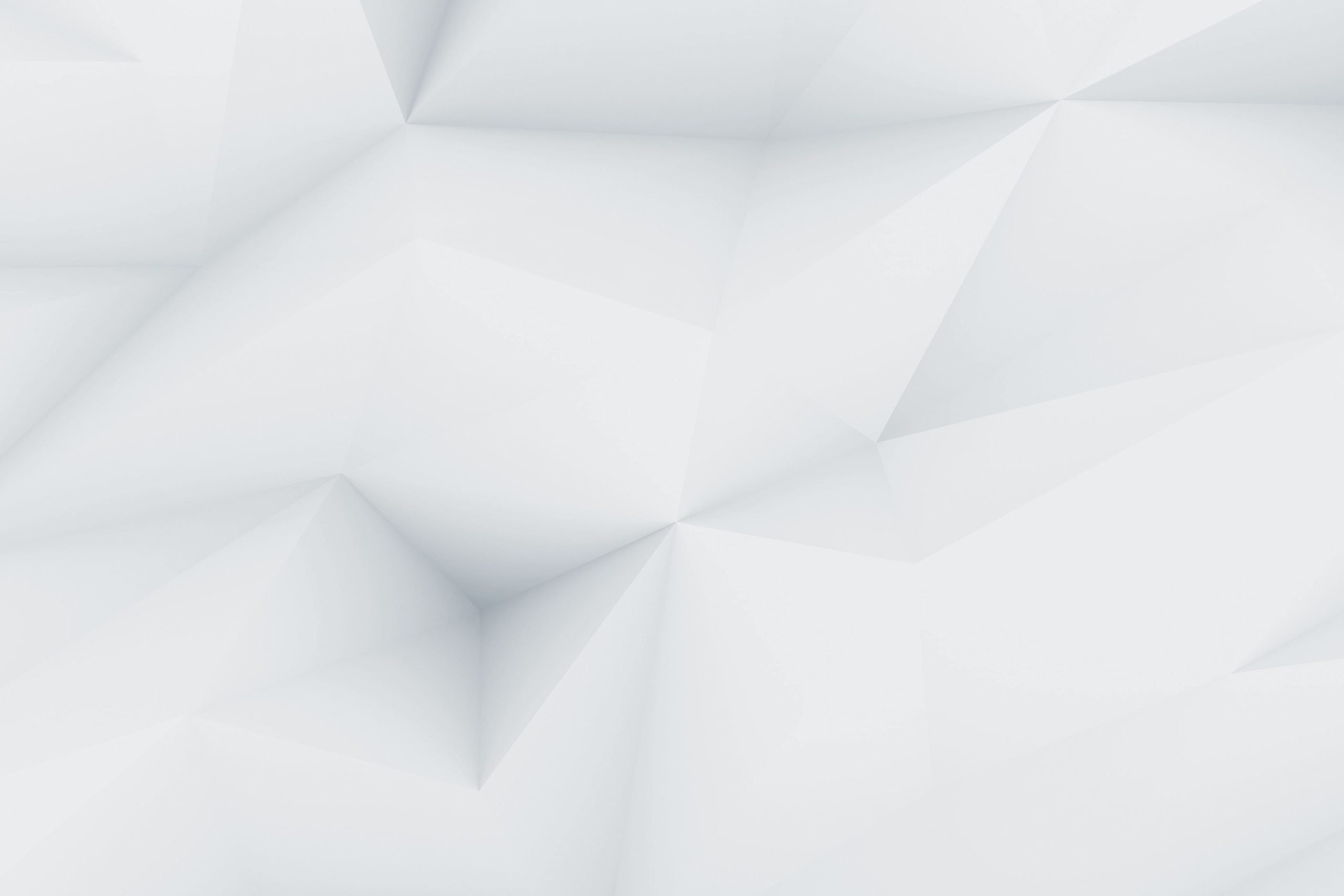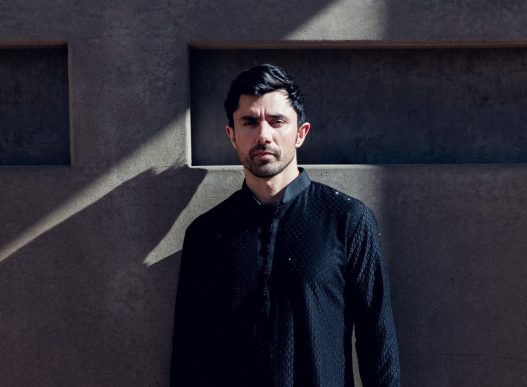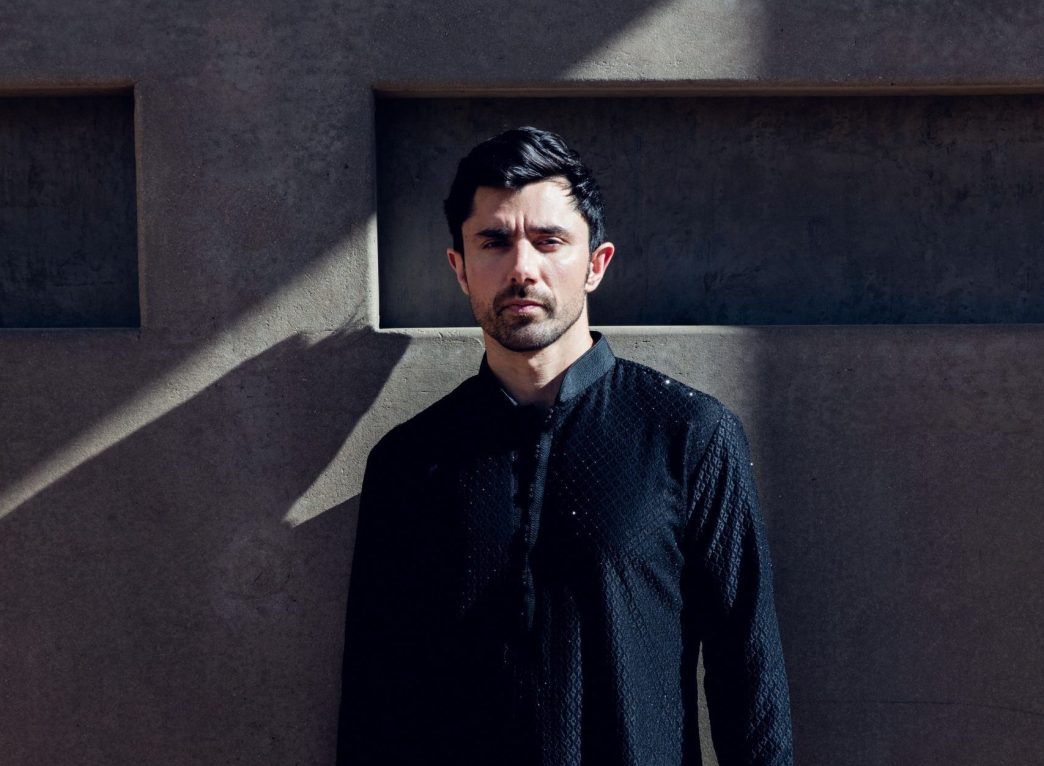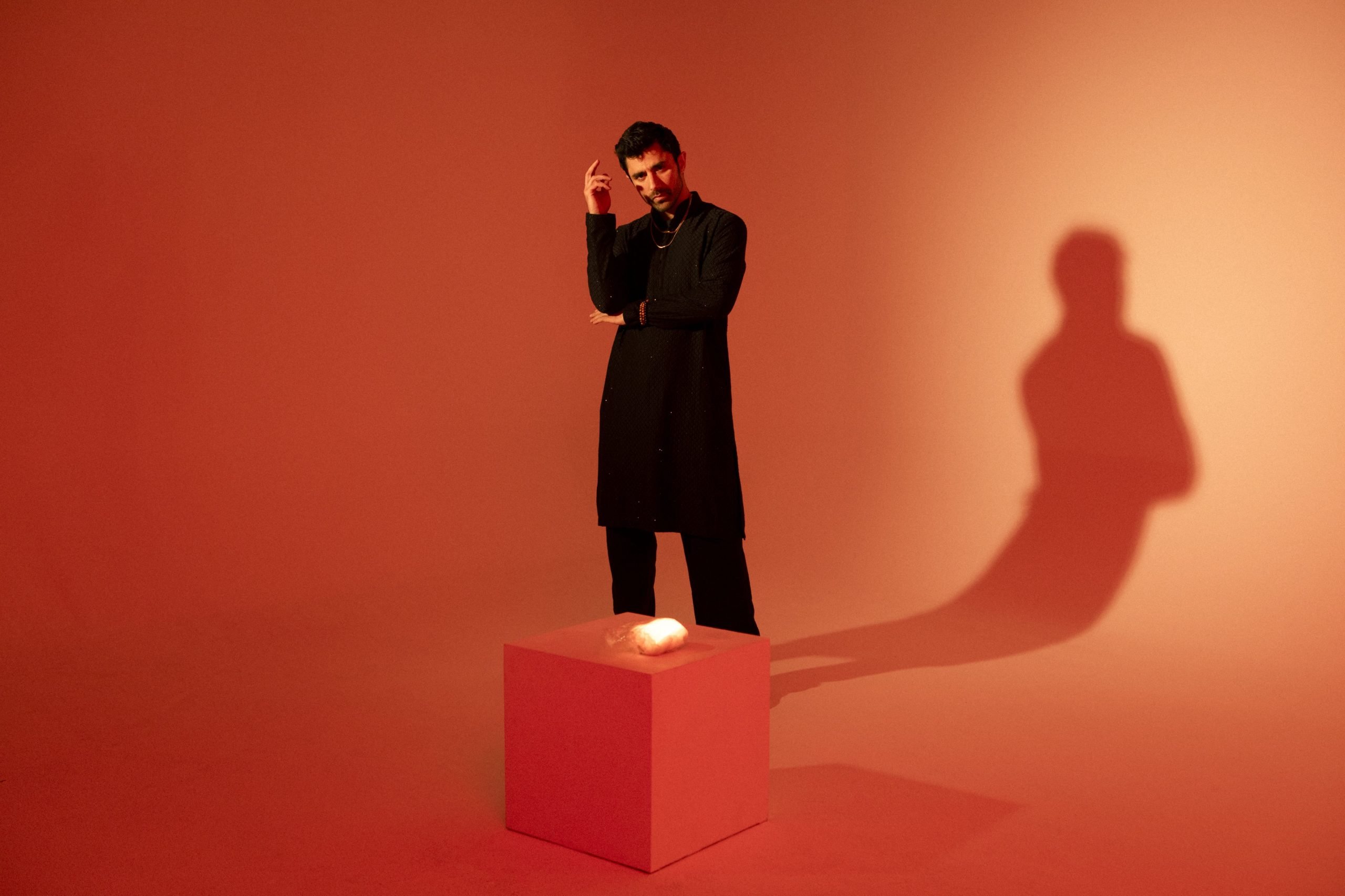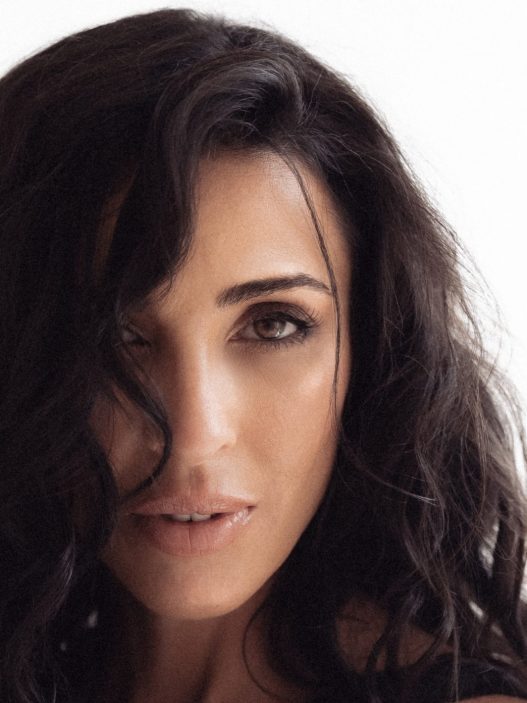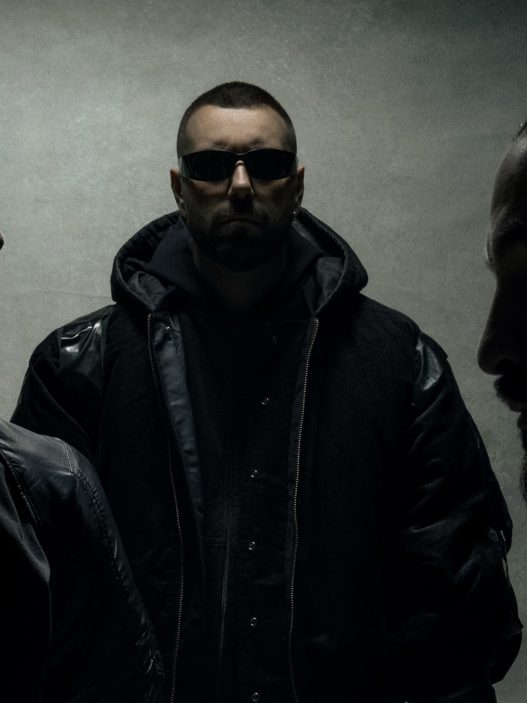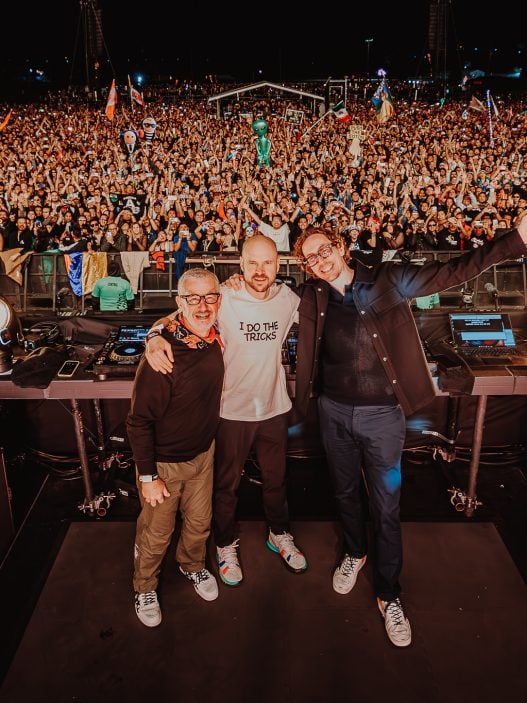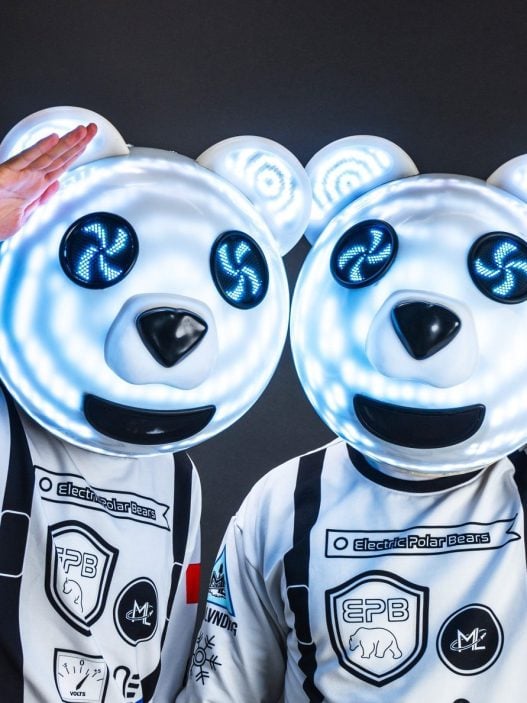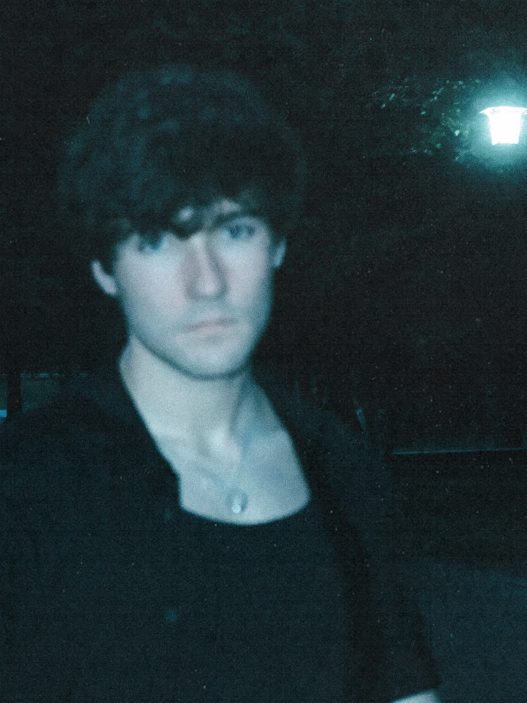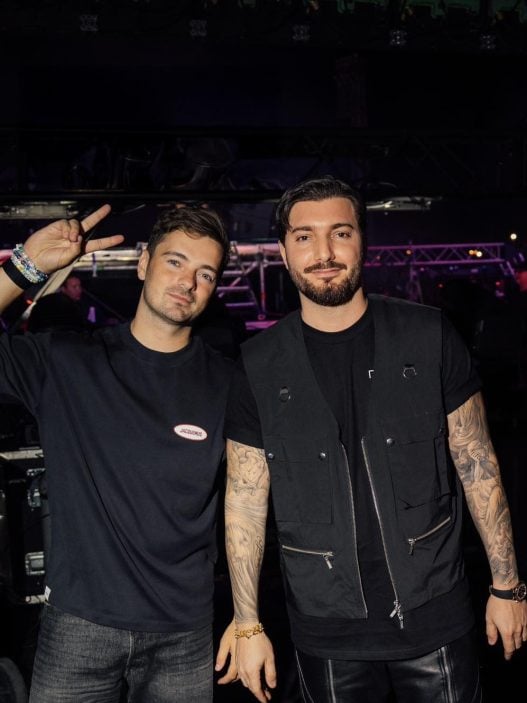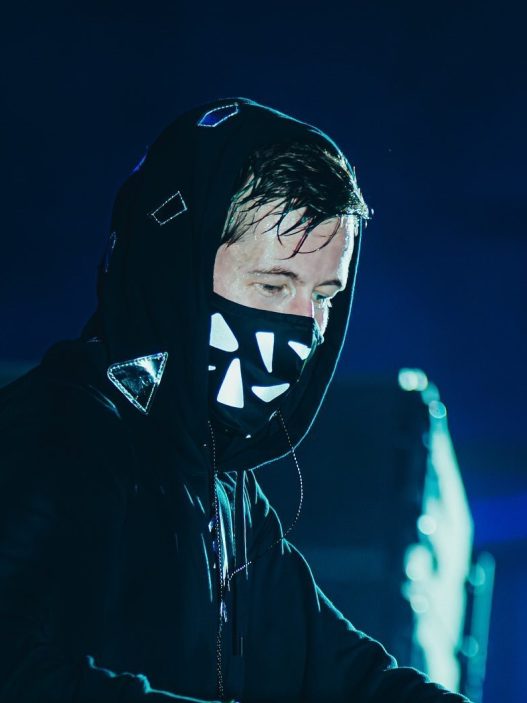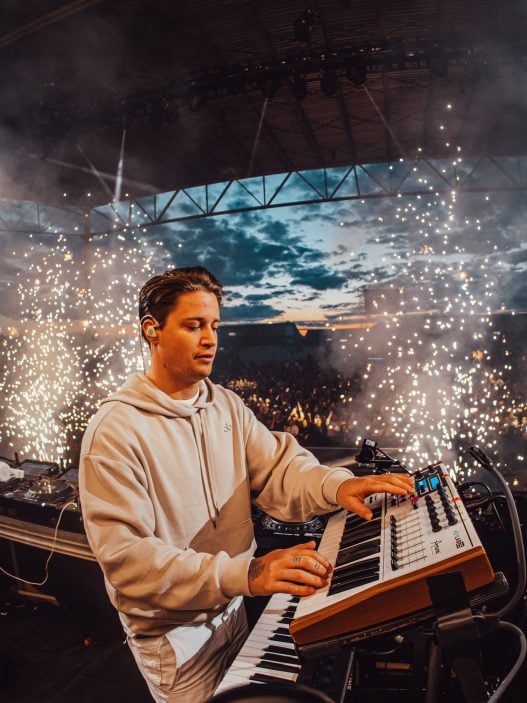Few artists in the electronic music world have traversed genres and broken boundaries quite like Niles Hollowell-Dhar, also known as KSHMR. From his early days producing hip-hop and co-writing the chart-topping 2010 anthem ‘Like A G6’ by Far East Movement, to shaping some of the most anthemic dance tracks of the past decade including the 2013 hit ‘Tsunami’, KSHMR’s journey has been nothing short of extraordinary.
Born in Berkeley, California, with Kashmiri-Indian heritage, KSHMR has seamlessly blended cinematic orchestration, cutting-edge dance music, and his Indian roots into a discography and career which defies limits. His legacy continues to grow through his imprint Dharma Worldwide which features releases from Gabry Ponte, Timmy Trumpet, KAAZE and many more. With a truly unwavering impact, his love for mentoring and empowering emerging artists is echoed through Dharma Studio, where he provides tutorials, sample packs and creative tools with his Sounds of KSHMR series.
We caught up with KSHMR to dive into his musical evolution, his take on the current state of EDM, the pivotal role collaboration has played in his career, and what lies ahead on his ever-expanding journey.
Where in the world are you right now and what has your day / night been like so far?
Right now, I’m at my house in Studio City, Los Angeles, and my day started a little rough. I was woken up by construction next door at 8:00 a.m.—which is actually later than I would have liked, since I was up late working on the new Sounds of KSHMR.
Let’s talk about your single ‘Bad’ with W&W. Can you tell us about the intention behind the single and how you approached working with W&W?
W&W have been friends of mine for years, and I’ve always admired their production. We had tried to collaborate before, but it didn’t pan out. This year, something just clicked. We felt that crowds were enjoying this evolved big room sound, and they were interested in a vocal that I also liked, so we said, “Why don’t we just do this song together?”
They put down some chords and a basic sketch that reminded me a lot of my old song ‘Secrets’ with Tiësto. I thought, this is perfect—it would be really fun to get back into the headspace I was in when making those big room songs. It all came very naturally, and the crowds love it.
Stream ‘Bad’ below:
For Ultra Miami this year you were joined by a live orchestra and performers, and on social media you mentioned that it was one of the best shows of your life. You’ve played countless shows and festivals, so what made this particular show so special and what stood out the most?
This show was special because of how unique it was. I don’t often get to perform with live dancers and an orchestra, so it was really about the talent I got to share the stage with. Usually, it’s just me clicking buttons, but this time I had decades of experience behind me—amazing musicians playing violin, cello, flute, trumpet—creating an experience far beyond what I could do alone.
It was also a great challenge. Instead of just playing the same records, I developed orchestral versions of them with the help of our music director, OnenO. I believe he chose that name because it’s a palindrome, which speaks to his beliefs about the cyclical nature of life. I feel like the palindrome “Madam, I’m Adam” is the classic.
Your Indian heritage is a massive part of your brand and career. What role does your heritage play in shaping your sound and artistic direction?
I’m Indian-American, and I’ve been going to India my whole life. It wasn’t something I was particularly interested in at first—until my dad sent me to live with my grandparents. I didn’t want to go to college, which really upset him, so he sent me to live with my grandfather to teach me time management—meaning I had to treat music as a hobby and education as the priority. That plan didn’t work, obviously, but during that time, I traveled all around India, visited hill stations and temples, and my pride in my heritage really blossomed.
Later, I went on to do The Cataracs, and we became known for party songs. When that ended, I wanted to create something more personal. I chose the name KSHMR because that’s where my family is from, and by drawing on India’s rich musical history, I was able to create interesting hybrids within electronic music. That sound has become my hallmark and something I’m very proud of.
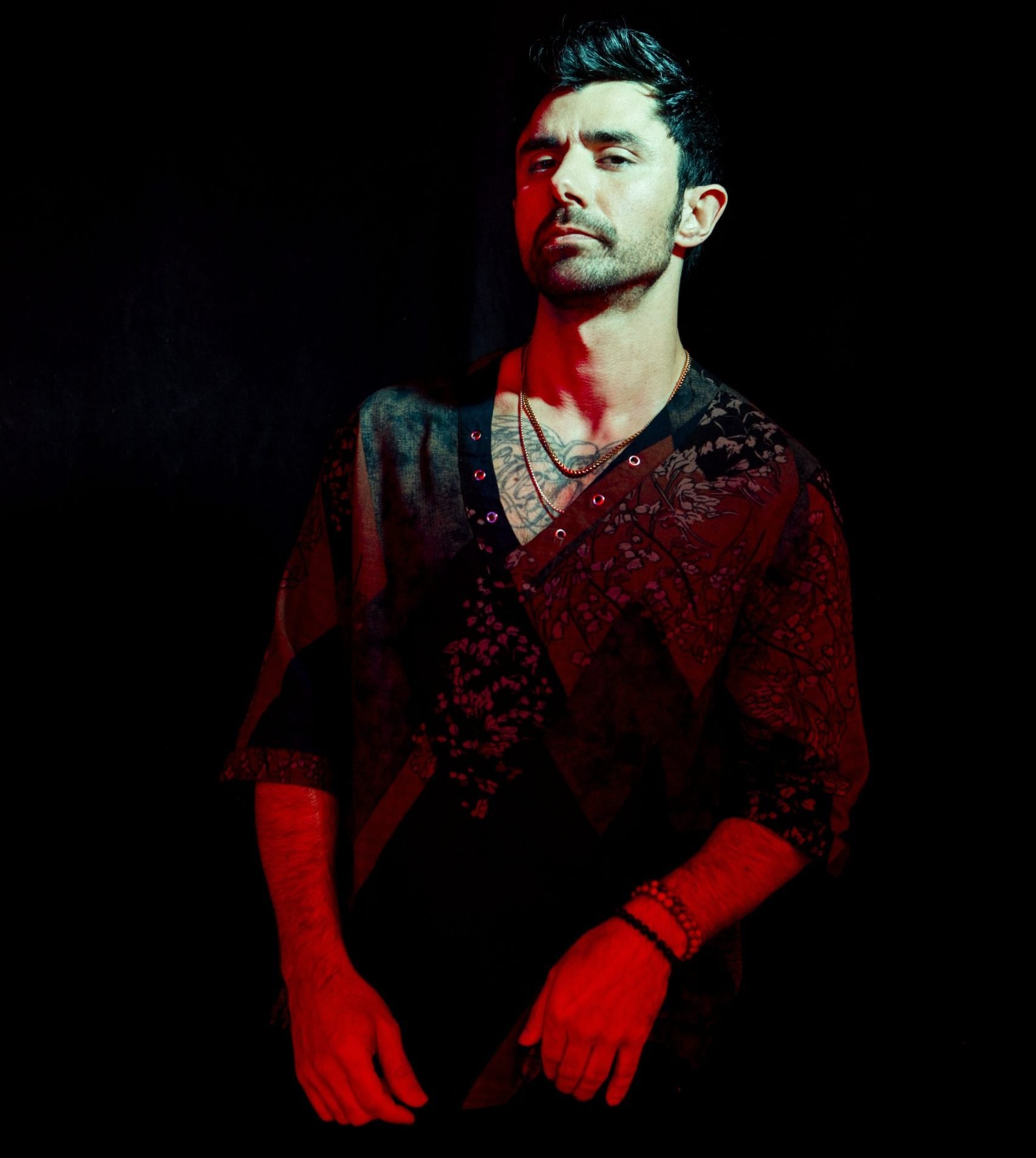
You’re set to perform at a slew of festivals this year, like Parookaville and Electric Love Festival. Can you give us a behind-the-scenes glimpse into how you build your festival sets? Do you improvise much during the performance?
I don’t really improvise much on stage. I’ve got a very clear plan—song one, song two, song three. That doesn’t mean I can’t improvise—I’ve had to. Sometimes someone tells me, “Your set has to be 15 minutes shorter,” and I make decisions on the fly. One moment that stands out was at Ultra, when it suddenly poured rain and stopped my set for about 10 minutes. My set length didn’t change, so I had to quickly figure out what to cut while still making sure the ending felt strong.
But in general, if everything goes to plan, there’s no improvisation—especially for orchestral sets. I have to be locked in to make sure the show ends on time and finishes with impact. The musicians also need click tracks in their ears, and doing that with CDJs is tricky. They weren’t designed for that kind of routing.
I use a third CDJ—muted to the audience—that just plays a metronome. It’s a delicate setup, so having a fully planned-out set with proper cue points is essential.
I love telling people I plan my sets. I love telling them I use the sync button. Just fuck all these guys. You know, they’re all so high and mighty, and I’m just like, no. When I first started DJing—which wasn’t too long ago, maybe 10 years—the sync button had just come out, and I was like, thank you, God. It’s not that I’m not an in-the-moment person, but not being able to plan everything out and be sure it’s all going to work gives me a lot of anxiety.
I’ve definitely played random shows—afterparties where I just wing it. I am mixing between tracks; it’s not just one big pre-made file. That would actually be more stressful, because if something went wrong, I’d have to figure out where I left off. So yes, I plan. And honestly, I’d be surprised if any major festival DJ doesn’t know exactly what songs they’re going to play.
There are guys like Fred Again.. who play drum pads live—that’s incredible. I can’t imagine doing that. That’s not how I produce. I like to sit and draw everything in. But I admire the hell out of it.

Your track ‘The Chant’ is a collaboration with Ryos, which has taken the EDM scene by storm. Collaboration has been a cornerstone of your career, how has working with other artists influenced your own growth and evolution?
I’d say collaboration has been the single biggest factor in my growth. Long before I had the production skills to execute my ideas, I was helped by amazing, more experienced producers like R3HAB, Bassjackers, Firebeatz, and DallasK—guys who believed in my ideas and gave me a chance before I truly understood dance music production.
I mention DallasK because when I first started the KSHMR project—after years making pop—I wanted to rent a little cabin in Big Bear to write ideas. Back when I was making pop, it wasn’t hard to find co-writers or collaborators. But for this KSHMR idea, nobody was down. A few people said yes and then dropped out—except for DallasK. He stayed the whole time, and we made two tracks. One of them was ‘Burn’, which became my first #1 on Beatport.
I’m so grateful to him—not just for collaborating, but for letting me watch a master at work. I learned so much about plugins and processing chains. Pop music is often about supporting a vocal—not that it doesn’t take great producers—but in dance music, the instrumental is the chorus, verse, and hook. There’s a deeper science to it. And if you look at bass music producers like Virtual Riot, they take that science even further. It’s mind-blowing.
On social media you mentioned that you’re also into coding. What drew you to this and can we expect any exciting projects in the near future?
I started when I was around 9 or 10 years old—obsessed with computer games and wanting to make my own. My parents sent me to a camp where I learned how to make games in Flash, which was big at the time. I needed music for my games, so I started searching online for loops, layering them—and immediately fell in love with making music. That launched my whole pursuit.
During COVID, about five years ago, I had a lot of time and wanted to make a birthday game for my best friend. He’d talked about an idea for a game, so I took it on. I had to learn what the modern tools were—coding is only part of game dev. There’s also art, animation, character rigging, and design. I had to learn After Effects and how to build assets. Then I coded all the logic.
It was really rewarding. In some ways, coding is more satisfying than music—it actually stole a lot of my attention. Music is so open-ended. You never really know when something’s “done.” But with code, if you can define your idea clearly and describe it with zero ambiguity, it just works. That’s beautiful to me. It’s deterministic, where music is more amorphous.
I’m not sure if I’ll ever do anything serious with it, but I love it. I even made a pretty developed game where EDC gets taken over by zombies, and my friends and I go through and kill them.

You also run Dharma Studio, which serves as a platform for artists to learn production techniques from yourself and other producers. What sparked the idea behind the platform?
When I think about myself, I love learning about music and music production. Really, I’m a nerdy guy. Creating a place to learn about music production is fulfilling my destiny. It comes really effortlessly to me, and it’s really rewarding. I am being brought back to what was most important to me.
Can you share a production tip that completely changed the game for you?
This is going to seem basic to a lot of people, but sidechain. It is a cornerstone of dance music. The other one is OTT. It’s probably the most abused effect, but for good reason. DallasK showed me how to use this one. Basically, OTT slams the shit out of your sound and makes it very loud.
What’s your take on the current state of EDM and its evolution?
It’s really hard to give one take on the current state because if you go to Europe, it’s one thing, in the U.S. it’s another, in China another. However, it seems like we are moving towards groovier dance music that is not as euphoric and grand as the stuff that I really fell in love with. It scratches a big itch for people because you don’t want to be blasted with over-the-top EDM all the time.
Although, I am also really encouraged to see that the big melodic sound is coming back in a new form with producers like Hardwell and Ryos, who is an up-and-coming producer that I really love. You see the big melodic sounds at shows. It’s still the harder songs—ones with melodies that people know and love—that do best. So I think that sound is coming around again in a new iteration.
Personally, I’m just not into the guy with sunglasses DJing elevator music with a bunch of hot girls around him, but maybe I’m an old man of a bygone era.
What’s next for KSHMR? Are there any surprise collaborations or projects in the works?
There are definitely collaborations in the works, but right now, my focus is finishing this damn Sounds of KSHMR pack—so I can finally get back to making music.
Follow KSHMR:



